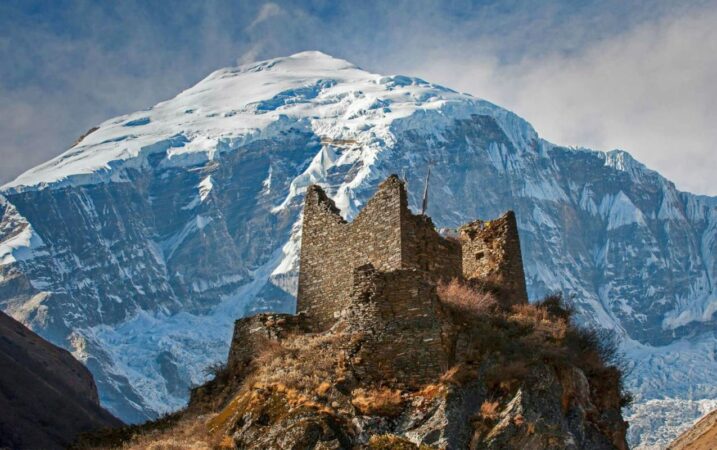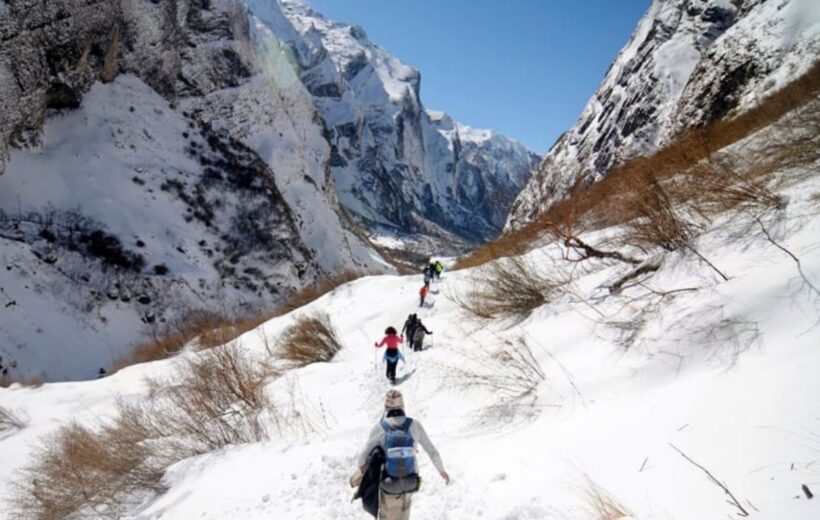Overview
The Dagala Thousand Lakes Trek is a medium-level trek starting in Geynizampa village, offering breathtaking views of numerous pristine lakes and stunning Himalayan vistas. The route features diverse vegetation, from vibrant rhododendrons at lower altitudes to majestic firs at higher elevations. Along the way, trekkers experience traditional Bhutanese village life and farming practices.
- Difficulty: Medium
- Max Elevation: 4,720 m
- Min Elevation: 2,250 m
- Best Season: April, May, June, September, October
- Duration: 6 days
Included/Excluded
- The Bhutan SDF
- All accommodations
- Meals and mineral water
- A licensed English-speaking guide
- A driver and vehicle
- Air fare
- A visa fee of US$40
- Alcohol
- Gifts/Souvenirs
- Travel insurance and personal bills
- Museums & Monument Fees
Tour Plan
Day 1: Geynizampa (2,800 m) - Gur (3,290 m)
- Distance: 7 km
- Time: 5 hours
- Ascent: 550 m
- Descent: 210 m
- Camp Altitude: 3,290 m
- Activities:
- Start the trek at Geynizampa, crossing a suspension bridge.
- Climb through an oak forest and reach a lookout point (3,220 m) for valley views.
- Continue on a gentler trail, then descend to Gur, passing yak pastures.
- Accommodation: Camping at Gur.
Day 2: Gur (3,290 m) - Labatamba (4,100 m)
- Distance: 12 km
- Time: 5 hours
- Ascent: 1,220 m
- Descent: 110 m
- Camp Altitude: 4,100 m
- Activities:
- Trek across high ridges with varied vegetation.
- Reach Pangalabtsa Pass (4,250 m) and enjoy views of Kanchenjunga and Himalayan peaks.
- Descend to Labatamba valley, camping near the trout-filled Utsho Lake.
- Accommodation: Camping at Labatamba.
Day 3: Labatamba (4,100 m)
- Activities:
- Rest day to explore the thousand lakes and enjoy panoramic Himalayan views.
- Recommended lakes: Reli Tsho, Hen Tsho, and Jama Tsho.
- Optional trout fishing with pre-arranged permits.
- Accommodation: Camping at Labatamba.
Day 4: Labatamba (4,100 m) - Panka (4,000 m)
- Distance: 8 km
- Time: 6-7 hours
- Ascent: 260 m
- Descent: 520 m
- Camp Altitude: 4,000 m
- Activities:
- Trek to Dajatsho and a saddle at 4,520 m.
- Option to ascend to a 4,720 m peak for better mountain views.
- Descend past yak herder huts to reach Panka.
- Accommodation: Camping at Panka.
Day 5: Panka (4,000 m) - Talakha (4,180 m)
- Distance: 8 km
- Time: 5-6 hours
- Ascent: 180 m
- Descent: 1,110 m
- Camp Altitude: 3,080 m
- Activities:
- Trek through several mountain passes to Tale La (4,180 m).
- Observe blue poppies (June and July) and high-altitude birds.
- Descend through spruce, birch, juniper, and rhododendron forests to Talakha Monastery.
- Accommodation: Camping beside Talakha Monastery.
Day 6: Talakha (4,180 m) - Chamgang (2,820 m)
-
- Distance: 6 km
- Time: 3 hours
- Descent: 1,360 m
- Activities:
- Descend on unpaved dirt roads to Chamgang.
- Option to ride to Simtokha Dzong or trek down to Chamgang.
- Insider Tips: From November to March, high elevation routes may be blocked by heavy snow.
This itinerary provides a comprehensive guide for trekkers, ensuring they experience the best of Bhutan's natural beauty and cultural richness during the Dagala Thousand Lakes Trek.
Tour Map
Bhutan is a year-round destination. There are four seasons: summer (June to August), autumn (September to November), winter (December to February) and spring (March to May). But because of the range of altitudes in the country, and the influence of the north Indian monsoons, the climate is incredibly varied.
In the south, the humid, subtropical climate is fairly consistent year-round, with temperatures between 15oC and 30oC. Central Bhutan, with its temperate forests, has a more seasonal climate, with warm summers and cool, dry winters. The northern regions are much colder during winter. Because of the high altitude, mountain peaks are snowy year-round and the lower reaches remain cool in summer.
In summer, the Indian monsoon season runs from late June or July to late September, mostly affecting the southern regions. Most farming activities take place in the summer, when crops thrive in verdant landscapes.
Autumn, from late September or early October to late November, follows the rainy season. It is characterised by bright, sunny days and some early snowfall at higher elevations. It’s the season of feasts and festivals as farmers reap the fruits of their work.
From late November until March, the crisp, clear and sunny winter sets in, with frost throughout much of the country and snowfall common above elevations of 3,000 metres. The winter northeast monsoon brings gale-force winds at the highest altitudes through high mountain passes, giving Bhutan the name Drukyul, which means Land of the Thunder Dragon in Dzongkha (Bhutan’s national language).
Bhutan’s generally dry spring starts in early March and lasts until mid-April. It is a botanist’s delight, with nature in full bloom. Summer weather commences in mid-April with occasional showers and continues to late June.
The SDF is USD 100 per night for adults from all countries except for India. Children aged between 6 years and who have not yet turned 12 are eligible to pay USD 50 per night. Children who have not yet turned 6 years old do not have to pay any SDF.
The SDF for Indian nationals (showing a valid Indian passport or Voter ID card) is Nu. 1,200 (or the equivalent amount in Indian rupees) per person, per night. Children aged between 6 years and who have not yet turned 12 are eligible to pay Nu./INR 600 per night. Children who have not yet turned 6 years old do not have to pay any SDF.
While most monuments in Bhutan are free, some are chargeable. For the full list of monument fees, please click here for more information. Children below 18 years will have a 50% concession and children aged five years and below will be exempted. Most monuments are open from 9am – 5pm each day. In June 2023 it was announced that foreign visitors can now visit monuments whenever they are open to the general public, without any restrictions.













